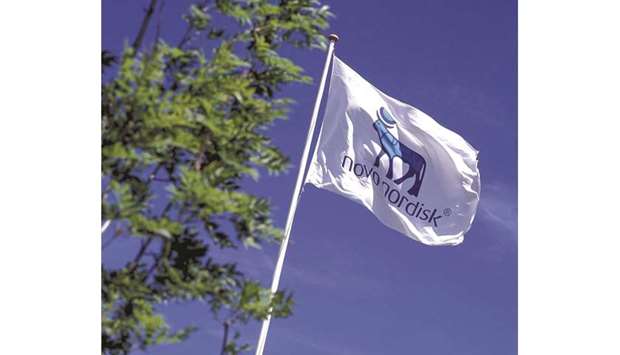Novo Nordisk said its experimental treatment semaglutide proved to be more effective than a competing therapy from Eli Lilly & Co in controlling glucose levels and aiding in weight loss for diabetics.
Patients treated with once-a-week versions of semaglutide, which belongs to a $5bn class of treatments known as GLP-1, as well as metformin demonstrated a better response than those who received Lilly’s dulaglutide, sold as Trulicity, the drugmaker said in a statement late on Wednesday. The treatment was tested in about 1,200 people in the late-stage study dubbed Sustain 7.
Shares of Novo jumped to their highest in more than seven weeks. The trial results may help in making semaglutide the new standard of care for treating Type 2 diabetes, Mads Krogsgaard Thomsen, chief science officer of the Danish company, said in the statement.
Getting regulatory approval for semaglutide, which is expected this year, is a “top priority” for the drugmaker as Trulicity is poised to take a bigger share of the US market than Novo’s older blockbuster Victoza by the end of 2017, Alistair Campwbell, an analyst at Berenberg Bank, wrote in a report to clients.
Semaglutide is currently being assessed by seven regulators including the US Food and Drug Administration and the European Medicines Agency. The drug, which stimulates insulin production, could generate more than $2bn in sales by 2021, according to the average of analysts’ estimates compiled by Bloomberg. That would compare to about $3.5bn for Victoza, whose patents begin to expire that year, and for Trulicity. Getting semaglutide approved is only the first hurdle that faces Novo, Campbell said. The treatment will also need to secure access to US patients by winning over insurers, intermediaries known as pharmacy benefit managers and the government’s Medicare programme.
“With both drugs offering significant benefits and convenience to patients, we believe that price will continue to be the most important dynamic in the diabetes space,” Jeffrey Holford, an analyst at Jefferies LLC, said in a note to clients. While semaglutide is “more competitive than expected,” Lilly “will still be able to utilise price as a way to retain share, which could end up as a net loss for all involved.”
Trulicity’s device, seen by doctors and patients as easy to use and painless, also could provide a significant “commercial defence” against the competition, according to Vamil Divan, an analyst at Credit Suisse Group. Payers in the diabetes market, meanwhile, don’t always favour the most effective product, they wrote in a note.
Novo said that 69% of people treated with a lower dose of semaglutide reached the target set by the American Diabetes Association for controlling blood glucose levels, compared with 52% for Trulicity. With a higher dose, 79% achieved the goal, compared with 68% for the Lilly product.
Overweight or obese patients treated with the higher semaglutide dose also experienced superior weight loss of 6.5kg (14.3 pounds), compared to 3kg for Trulicity, according to the statement.
The treatment has so far also proven to be effective in reducing the risk of heart attacks, strokes and cardiovascular deaths in earlier studies.
The most common side effect in Sustain 7 was mild to moderate nausea, which was comparable to Lilly’s treatment and diminished over time, according to the statement. The number of people reporting diabetic retinopathy, a complication caused by high blood sugar levels damaging the eye, was low and comparable in both groups, Novo said.

Patients treated with once-a-week versions of semaglutide, which belongs to a $5bn class of treatments known as GLP-1, as well as metformin demonstrated a better response than those who received Lilly’s dulaglutide, sold as Trulicity, the drugmaker said in a statement.
